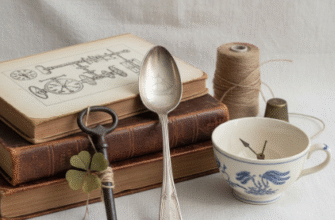Imagine waking up with a splitting headache. Today, you might reach for a painkiller. A few centuries ago, your doctor might have suggested drilling a hole in your skull to let the evil spirits out. Welcome to the world of historical medicine, a place where good intentions met bizarre theories, creating a fascinating tapestry of treatments that range from the strangely logical to the downright terrifying. It’s a journey that reminds us just how far we’ve come and reveals the enduring human quest for health and healing against all odds.
The Great Balancing Act: The Four Humors
For nearly two millennia, Western medicine was dominated by a single, powerful idea: the theory of the Four Humors. Originating with the ancient Greeks, luminaries like Hippocrates and Galen proposed that the human body was filled with four essential fluids: blood, phlegm, yellow bile, and black bile. Each humor was linked to an element (air, water, fire, earth) and a specific temperament (sanguine, phlegmatic, choleric, melancholic). A healthy person had these humors in perfect balance. Sickness, therefore, was simply a matter of having too much or too little of one fluid.
This elegant, all-encompassing theory dictated nearly every medical intervention. If you were feverish and red-faced (a sanguine, or blood-dominant, state), the obvious solution was to remove the excess blood. This led to the widespread and enthusiastic practice of bloodletting. Doctors, and more often barber-surgeons, would open a vein with a lancet or apply leeches to draw out the “superfluous” blood. It was used to treat everything from nosebleeds and pneumonia to heartache and insanity. Similarly, if a patient was seen as having an excess of a different humor, treatments would involve potent laxatives and emetics to purge the body from the other end. While it seems barbaric now, within the framework of humoral theory, it was perfectly logical.
A Pharmacy of Curiosities
Before the advent of synthetic pharmaceuticals, the natural world was the only pharmacy available. This led to some truly inventive, and often stomach-turning, remedies. One of the most sought-after medicines in Renaissance Europe was mummia, a powder made from grinding up actual ancient Egyptian mummies. It was believed to have incredible healing properties and was prescribed for everything from coughs to internal bleeding. The trade in mummies, both real and counterfeit, became a lucrative business.
The list of strange ingredients goes on. Poultices made from animal dung were commonly applied to wounds and sores, based on the idea that they could draw out infection. In some cases, the ammonia and anti-microbial properties of certain types of dung might have offered a tiny benefit, but the risk of tetanus was immense. For centuries, one of the primary treatments for syphilis was mercury. Patients would ingest it, rub it on their skin, or even sit in vapor boxes to inhale its fumes. The cure was often worse than the disease, leading to severe poisoning, tooth loss, and neurological damage, encapsulated in the grim saying of the time: “One night with Venus, a lifetime with Mercury.”
One of the most enduring, if bizarre, surgical procedures in history was trepanation, the act of drilling or scraping a hole into the human skull. Archaeological evidence confirms it was practiced across the globe, from ancient Europe to the Americas. Skulls have been found with clear signs of bone regrowth around the hole, proving that many patients survived the procedure. The reasons behind it likely varied, from releasing evil spirits and treating epilepsy to relieving pressure from a skull fracture.
When Surgery Was a Spectacle
Before anesthesia and antiseptics, surgery was a brutal, last-ditch effort performed in front of a paying audience. The best surgeons were not the most precise, but the fastest. A swift amputation by a master like Robert Liston could take less than 30 seconds, a mercy given the unimaginable pain involved. The surgeon, often clad in a blood-soaked apron he used for multiple operations, would work with unsterilized tools while assistants held the screaming patient down.
The Barber-Surgeon
For much of history, surgery was not considered a noble profession for physicians. Instead, it was the domain of the barber-surgeon. These were craftsmen who were skilled with sharp instruments. Alongside cutting hair and shaving beards, their services included pulling teeth, setting bones, and, of course, bloodletting. The iconic red and white striped barber’s pole is a direct relic of this practice, symbolizing bloody bandages wrapped around a pole.
The Mind and Mysterious Ailments
Understanding of mental and internal health was particularly fraught with superstition. The ancient Greeks, for instance, diagnosed many female ailments with a condition called “hysteria,” stemming from the Greek word for uterus, hystera. They believed the womb was a free-floating organ that could wander throughout the body, causing everything from anxiety and fainting spells to shortness of breath. The prescribed “cures” often involved using pleasant or foul-smelling substances to lure the wayward womb back to its proper place.
Later, in the 18th century, the physician Franz Mesmer proposed the theory of “animal magnetism.” He believed a universal magnetic fluid flowed through the body and that illness resulted from blockages in this flow. His “treatments” involved sitting patients in a circle around a vat of “magnetized” water and iron filings, with Mesmer himself, often in a theatrical lilac robe, passing his hands over them to restore their magnetic harmony. While his theories were eventually debunked, his work inadvertently highlighted the power of suggestion and laid some of the groundwork for the later study of hypnotism.
Looking back at these practices, it’s easy to dismiss them as foolish or cruel. But they represent humanity’s earliest, most desperate attempts to understand the complex machine of the human body. Each misguided theory and strange concoction was a step on the long, winding road to modern medicine, a testament to our relentless drive to conquer illness and prolong life, even if it meant drilling a few holes along the way.








